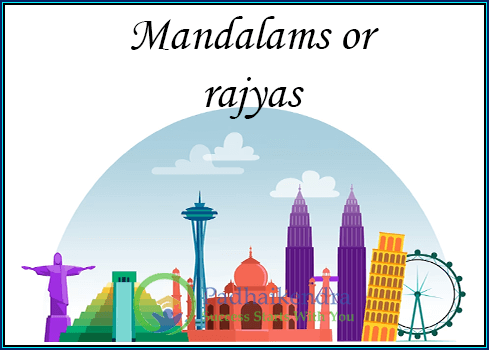Meaning of the term Mandalams or rajyas used during Vijaynagar Empire
During the Vijayanagara Empire, which existed from the 14th to 17th centuries in South India, the term “Mandalams” or “Rajyas” was used to refer to administrative divisions of the empire.
The term “Mandalam” was derived from the Sanskrit word “Mandala,” which means circle or region. It was used to refer to a large territorial division of the empire, which was governed by a high-ranking official known as a “Mandalika.”
Each Mandalam was further divided into smaller administrative units known as “Nadus” or “Vishayas,” which were governed by officials known as “Nayakas.” The Nayakas were responsible for collecting taxes, maintaining law and order, and ensuring that the needs of the people in their region were met.
The term “Rajya” was also used to refer to administrative divisions of the empire, although it was typically used to describe smaller regions that were governed by local rulers who were loyal to the Vijayanagara Empire. These rulers were known as “Rajahs,” and they were responsible for collecting taxes and maintaining law and order within their own territories.
The use of Mandalams and Rajyas as administrative units allowed the Vijayanagara Empire to effectively govern a large and diverse region of South India. It also allowed for a degree of local autonomy and flexibility, as officials at the Mandalam and Rajya levels were able to respond to the specific needs and concerns of the people in their regions.
Today, the legacy of the Vijayanagara Empire’s administrative system continues to be an important part of the cultural and historical heritage of South India, and it serves as an example of how effective governance can be achieved through the use of decentralized administrative structures.

